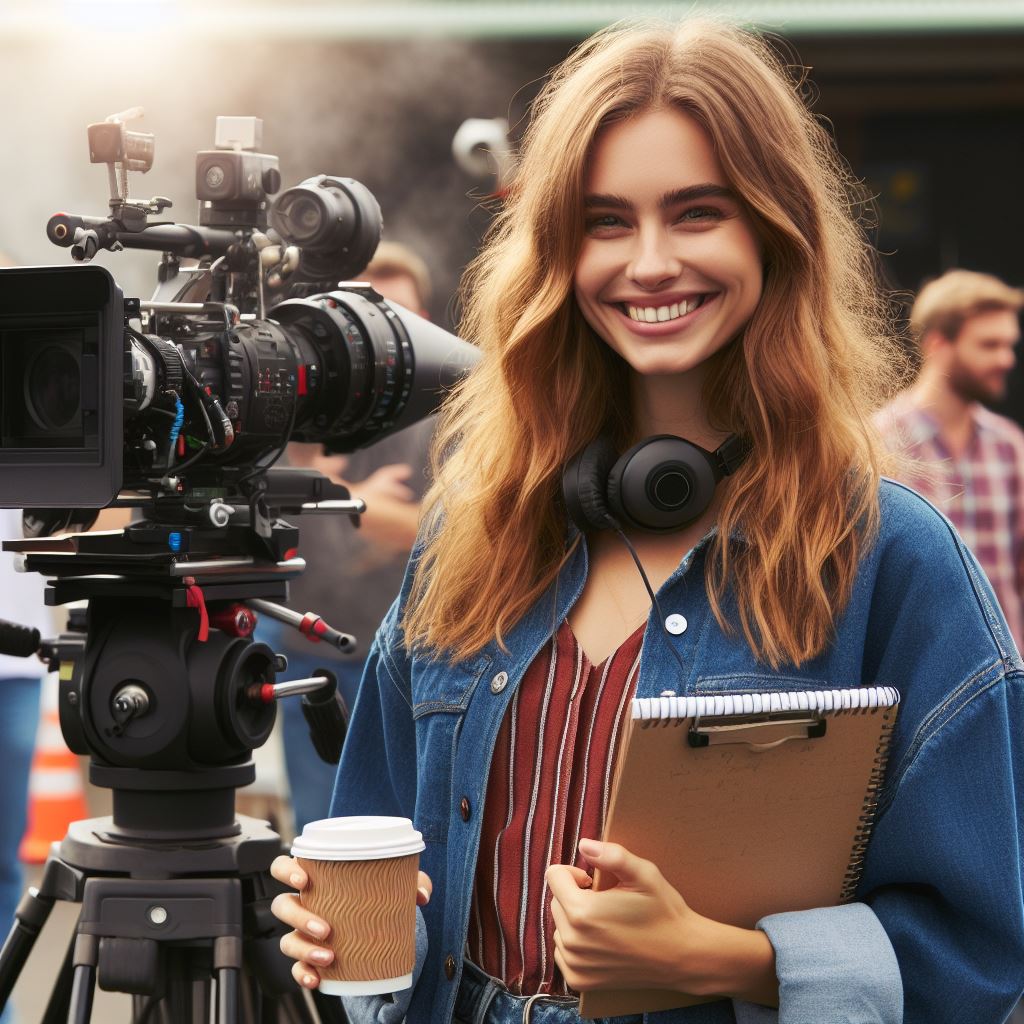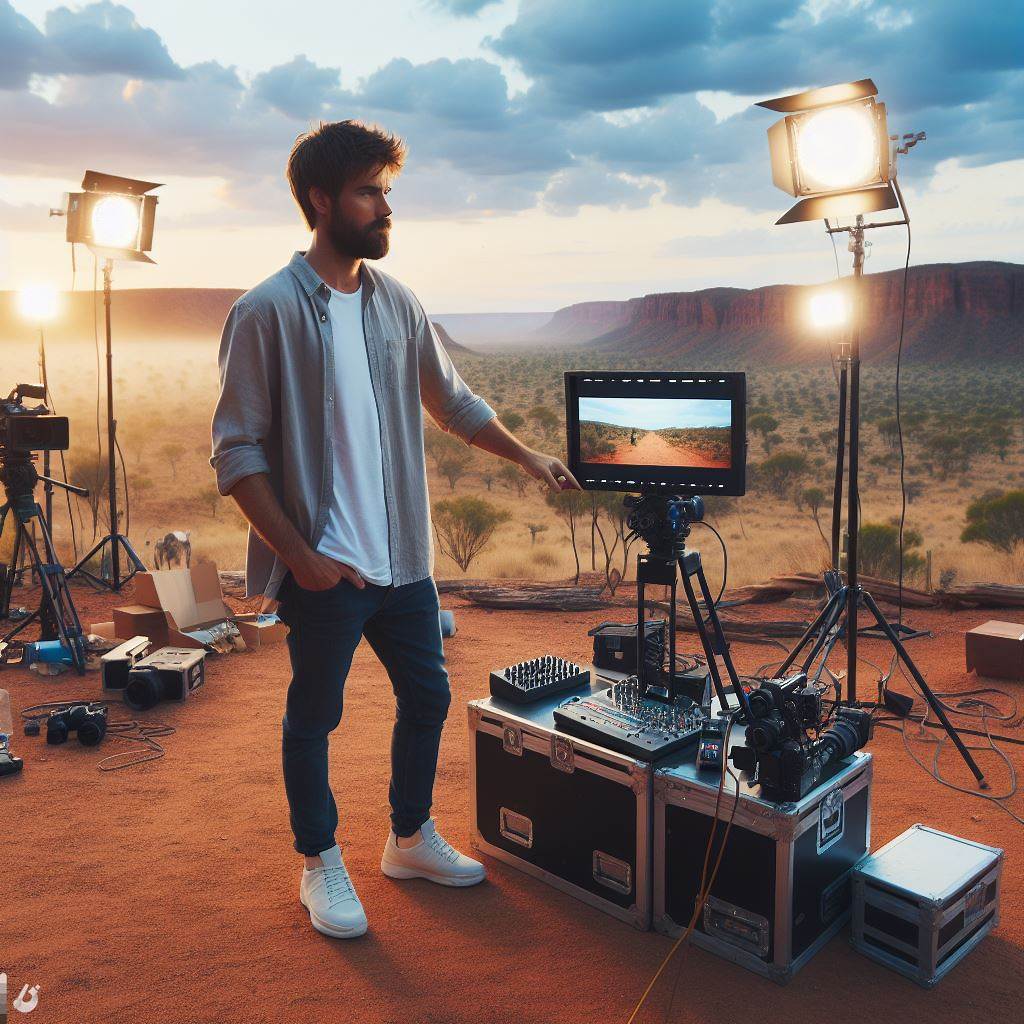Introduction
Women in Australian journalism today play a crucial role in shaping the media landscape.
Gender equality in the industry is of utmost importance as it fosters diversity and ensures a balanced representation of society.
In this section, we will delve into the challenges faced by women in this field and highlight their achievements and contributions.
We will also discuss the initiatives aimed at promoting equality and empowering women in Australian journalism.
Additionally, we will explore the future prospects for women in this dynamic and evolving industry.
Australian journalism currently addresses gender equality in the profession, with active steps taken for women’s advancement.
It is a testament to the resilience and determination of the women who have triumphed over obstacles and made significant strides in the field.
Historical Perspective
A. Early Challenges for Women in Australian Journalism
- In the early 20th century, societal norms restricted women’s entry into journalism.
- Gender biases prevailed, limiting opportunities for women in newsrooms.
- Lack of education and professional networks hindered their journalistic aspirations.
- Women faced skepticism about their ability to cover serious topics competently.
- Unequal pay and discriminatory policies further deterred women from pursuing journalism.
B. Notable Female Pioneers in Australian Journalism
1. Nellie Melba (1870–1931)
- The first Australian woman to report from the front lines during World War I.
- Pioneered war correspondence, breaking the gender barrier in conflict reporting.
2. Dame Enid Lyons (1897–1981)
- Australia’s first female member of the House of Representatives.
- Advocated for women’s rights and paved the way for women in political journalism.
3. Ita Buttrose (b. 1942)
- Groundbreaking editor, becoming the first female editor of a major Australian newspaper.
- Championed women’s issues, reshaping the landscape of women’s representation in media.
C. Progression of Women’s Role in Australian Journalism Over Time
1. Late 20th Century
- Women journalists began to gain visibility in mainstream media.
- The emergence of feminist movements influenced the narrative, promoting gender inclusivity.
2. 21st Century
- Digital media platforms provided women with new avenues for expression.
- Increased focus on diversity and inclusion improved opportunities for women in journalism.
3. Current Landscape
- Women occupy prominent roles as editors, reporters, and media executives.
- Initiatives like mentorship programs and diversity quotas continue to promote gender equity.
In a nutshell, the evolution of women in Australian journalism reflects a journey from adversity to triumph.
Despite early challenges, pioneering women reshaped the narrative, paving the way for the vibrant, diverse landscape we witness today.
Current Landscape
A. Statistics
- Women comprise approximately 47% of the total number of journalists in Australia.
- Only 32% of senior editorial positions in Australian newsrooms are held by women.
- In the top five Australian newspapers, 73% of news articles are written by men.
- When it comes to reporting politics, women journalists cover only 32% of the stories.
B. Underrepresentation of Women in Senior Positions
The glass ceiling persists in the field of journalism, preventing women from advancing to senior roles.
- One reason for this underrepresentation is the prevalence of male-dominated newsroom cultures.
- Stereotypes and biases often hinder women’s chances of being promoted to leadership positions.
- Gendered expectations and unconscious bias contribute to the limited career progression for women in journalism.
C. Gender Pay Gap in Journalism
Despite the important role women play in journalism, the gender pay gap remains a prominent issue.
- Female journalists earn less compared to male journalists across different media organizations.
- Factors like job tenure, experience, and seniority do not fully account for the wage disparity.
- Discrimination and undervaluation of women’s contributions perpetuate the gender pay gap.
D. Impact of Gender Imbalance on News Coverage and Perspectives
The lack of gender diversity in newsrooms can have significant implications for news coverage.
- Stories can often be framed from a predominantly male perspective, neglecting diverse viewpoints.
- Gender imbalances can also perpetuate stereotypes and reinforce gender-based biases.
- Including more women in key editorial roles can lead to a broader range of perspectives and more balanced reporting.
E. Addressing the Issues
Efforts can be made to improve the representation and treatment of women in Australian journalism.
- Media organizations should adopt diversity quotas to ensure equal opportunities for women.
- Mentoring programs and leadership training can help women overcome barriers and excel in senior positions.
- Promoting a culture of inclusion and gender equity within newsrooms is crucial for lasting change.
It is essential that the voices, talents, and perspectives of women in Australian journalism are recognized and given equal opportunities.
Achieving gender parity will lead to a more inclusive and balanced media landscape for the benefit of all.
Read: How to Network in Australia’s Music Scene
Challenges and Obstacles
A. Barriers women face in the industry
- Gender bias can limit women’s opportunities for career advancement.
- There is often a lack of representation of women in senior leadership roles.
- Inadequate mentorship and networking opportunities may hinder women’s professional growth.
- Some women may face a glass ceiling that prevents them from reaching higher positions.
- Sexual harassment and workplace discrimination can create a hostile environment for women in journalism.
- Implicit biases and stereotypes can lead to women being underestimated or undervalued in the industry.
- Unequal pay and negotiation barriers can negatively impact women’s financial security and professional status.
- Juggling multiple responsibilities, such as childcare and household tasks, can pose a challenge for women in journalism.
- The prevalence of gendered expectations and stereotypes can perpetuate inequalities in the industry.
- Women from diverse backgrounds may face additional barriers, such as racial or cultural discrimination.
B. The issue of gender bias and discrimination in newsrooms
- Women may experience patronizing attitudes or dismissive behavior from male colleagues.
- Microaggressions and unconscious bias can undermine women’s contributions and expertise.
- Sexist comments and harassment may create a toxic work environment for female journalists.
- Promotion and recognition opportunities may be biased in favor of men.
- Gender stereotypes can influence assignment choices, with women often relegated to “soft” topics.
- Newsroom cultures may perpetuate “boys’ clubs” that exclude or marginalize women.
- Companies may limit women’s growth by assigning less challenging tasks, reducing opportunities for visibility and advancement.
- Gender bias can affect story selection, leading to a lack of diverse perspectives in reporting.
- Women may face scrutiny and double standards regarding their appearance and professionalism.
- Discrimination and bias can erode women’s confidence and sense of belonging in the industry.
C. The challenges of work-life balance for female journalists
- The demanding nature of journalism can make it difficult for women to balance work and personal life.
- Long and irregular working hours can disrupt family responsibilities and personal commitments.
- Limited support for parental leave and childcare options can hinder career progression for women.
- Pressures to constantly be available and responsive can lead to burnout and stress.
- The expectation to travel extensively for assignments can be challenging for women with caregiving responsibilities.
- The lack of flexibility in work arrangements may impede work-life balance for female journalists.
- Work-related stress and pressure can impact women’s mental and physical well-being.
- The gendered division of labor at home can compound the challenges of work-life balance for women.
- Women may face judgment or criticism for prioritizing their personal life over work obligations.
- Supportive workplace policies and a shift in organizational culture are crucial to address work-life balance challenges.
These are just some of the challenges and obstacles that women in Australian journalism face today.
By acknowledging and addressing these barriers, we can work towards a more inclusive and equitable industry.
Your Personalized Career Strategy
Unlock your potential with tailored career consulting. Get clear, actionable steps designed for your success. Start now!
Get StartedRead: Music Production: A Guide for Aussies

Prominent Australian Women Journalists
A. Successful female journalists in Australia
- Liz Jackson: Known for her investigative journalism, she exposed corruption and abuse of power.
- Leigh Sales: As the host of ABC’s 7.30, she has conducted groundbreaking interviews with global leaders.
- Caroline Wilson: A respected sports journalist, she has challenged gender norms and paved the way for women in this field.
- Sarah Ferguson: Her hard-hitting documentaries have won multiple awards, tackling important social issues.
- Helen McCabe: As the editor-in-chief of Nine.com.au, she is a trailblazer in digital journalism.
- Kate McClymont: Her investigative reporting on corruption and crime has made her an influential figure in Australian journalism.
- Tracey Spicer: A fearless advocate for gender equality, she has exposed sexual harassment and abuse in the media industry.
- Annabel Crabb: Known for her political analysis, she brings a fresh perspective to Australian politics.
- Kate Legge: Her feature articles in The Australian have shed light on important social and environmental issues.
- Melissa Doyle: A popular television presenter, she has contributed to current affairs programs and interviewed significant figures.
B. Achievements and contributions to the industry
These women journalists have made significant achievements and contributions to the Australian journalism industry.
They have broken barriers, challenged norms, and paved the way for future generations.
Each of them has shown exceptional skills and talent in their respective roles, demonstrating the diverse range of roles women have in journalism today.
From investigative journalists like Liz Jackson and Kate McClymont, who fearlessly expose corruption and abuse of power, to Leigh Sales and Annabel Crabb, who leave no stone unturned in their political analysis, women in Australian journalism have proven themselves to be formidable and influential forces.
Caroline Wilson and Sarah Ferguson have used their platforms to challenge gender stereotypes in sports journalism, while Helen McCabe and Kate Legge have embraced the digital era, excelling in their roles as editors and reporters in online news platforms.
Tracey Spicer stands as a symbol of resilience and an advocate for gender equality, as she fearlessly exposes sexual harassment and abuse in the media industry, prompting crucial conversations and calls for change.
Melissa Doyle’s contribution to Australian journalism resonates with her engaging television presence, as she has covered significant current affairs stories and conducted insightful and thought-provoking interviews.
C. Diverse range of roles women have in journalism today
The achievements and contributions of these women highlight the vast opportunities and roles available to women in journalism today.
They have shattered glass ceilings, leading the way for others to follow their passion for storytelling and news reporting.
It is crucial to recognize and celebrate the accomplishments of these women as they continue to break new ground and inspire future generations of journalists.
Their impact on Australian journalism serves as a reminder of the importance of diverse voices and perspectives within the industry.
Read: Australian Music Awards: A Closer Look
You Might Also Like: Managing Finances as an Aussie Musician
Stand Out with a Resume That Gets Results
Your career is worth more than a generic template. Let us craft a resume and cover letter that showcase your unique strengths and help you secure that dream job.
Get HiredInitiatives and Progress
A. Showcasing Initiatives for Gender Equality
- The Women in Media initiative stands tall, amplifying women’s voices and addressing gender disparities head-on.
- Media outlets like ABC and SBS actively implement diversity and inclusion strategies to foster equality.
- The Walkley Foundation’s Women’s Leadership Program paves the way for aspiring female journalists to shatter glass ceilings.
B. Importance of Mentorship and Sponsorship Programs
- Mentorship programs, such as those by the MEAA, empower women journalists to navigate the industry’s complexities.
- Sponsorship initiatives like the Women in Media Foundation propel careers, ensuring women’s talents receive due recognition.
- Through mentorship, experienced journalists guide the next generation, fostering a supportive ecosystem for women in journalism.
C. Notable Organizations Advocating for Women’s Rights in Media
- The Australian Women’s Media Centre champions fair representation, challenging stereotypes and biases within media narratives.
- Our Watch, focusing on gender equality and respectful relationships, collaborates with media to reshape narratives responsibly.
- The Stella Prize celebrates outstanding women writers, challenging the literary landscape’s gender imbalance.
In the dynamic landscape of Australian journalism, these initiatives underscore progress.
Women are not just contributors; they are catalysts for change.
As the media industry evolves, these programs and organizations forge a path toward inclusivity, ensuring that the stories told represent the diverse voices that make up our society.
The journey is ongoing, but the strides taken today lay the foundation for a more equitable and representative tomorrow.
Read: Building a Music Career in Australia
Delve into the Subject: Interview Skills for Journalists
Delve into the Subject: Australian Photography: A Modern Guide
Conclusion
A. Current state of women in Australian journalism
The current state of women in Australian journalism is mixed.
While progress has been made in terms of representation, there are still significant gaps in gender equality within the industry.
B. Potential for increased representation and gender equality
There is potential for increased representation and gender equality in Australian journalism.
By actively working towards diversity and inclusivity, newsrooms can create a more balanced and representative workforce.
C. Importance of empowering women in the industry
Empowering women is crucial in the industry.
Providing equal opportunities, support, and mentorship can help women thrive and contribute their unique perspectives to journalism.
D. Continued progress and support for women in journalism
It is important for continued progress and support for women in journalism.
Transform Your LinkedIn for Maximum Impact
Elevate your professional brand with a LinkedIn profile that attracts recruiters, showcases your expertise, and maximizes opportunities. Stand out in your industry with a profile built for success.
Boost ProfileBy raising awareness, challenging biases, and advocating for gender equality, we can create a more inclusive and diverse industry.
A call to action is needed for all stakeholders in journalism to contribute to gender equality.
This includes media organizations, journalists, readers, and policymakers.
By collectively working towards an inclusive industry, we can ensure that women’s voices and contributions are valued and celebrated in Australian journalism.




